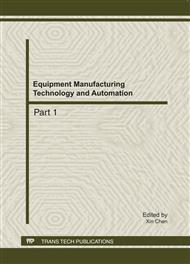p.345
p.350
p.354
p.361
p.366
p.370
p.374
p.386
p.393
Intelligent Analogy on Wireless Communication Link Performance of Industry Wireless Sensor Networks
Abstract:
The received signal strength indication (RSSI) is the key factor in the communication link for industry wireless sensor networks, while it is very difficult to model the value of RSSI to the distance of two communication nodes. This paper presented a fuzzy neural network modeling method to solve the shortcoming of the theoretical modeling. After the value of RSSI and the distance value of two communication nodes are fuzzed by Gaussian membership function, a fuzzy controlling rule is also presented, and then the output value of fuzzy neural network, namely the error distance of two communication nodes can be attained. Finally, simulation results show that without correcting the environmental parameters, the estimated error value of the distance of two communication nodes through RSSI in fuzzy neural network model is less than in quadratic fit method. So, the method presented by this paper can provide precise data support for wireless sensor networks for industry environment.
Info:
Periodical:
Pages:
366-369
Citation:
Online since:
August 2011
Authors:
Price:
Сopyright:
© 2011 Trans Tech Publications Ltd. All Rights Reserved
Share:
Citation:


